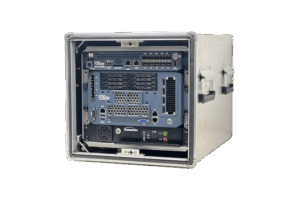Seoul, Seoul / Syndication Cloud / October 9, 2025 / Lydian Cosmetic Surgery Clinic

Key Takeaways
- Stem cell therapy offers a minimally invasive alternative to joint replacement surgery, with recovery times of just one to two weeks compared to months for major surgery
- Clinical studies show varying success rates, with 60-80% of patients in some trials experiencing significant pain relief and improved mobility, though results depend on condition severity and treatment type
- Treatment costs range from $4,000-$10,000 for single joint injections in the USA, with more complex treatments reaching higher amounts
- Korea maintains advanced stem cell therapy regulations and treatment protocols, positioning it as a leading destination for regenerative medicine
- Recovery follows a general timeline: initial healing within days, noticeable improvements typically at 6-9 weeks, and continued tissue repair for up to one year
Studies show that the number of joint replacement surgeries is on the rise, while the average patient age is dropping. An increasing number of younger individuals with arthritis and other chronic conditions are opting for surgery to remain active.
But joint pain doesn’t have to mean accepting major surgery and months of recovery. As regenerative medicine advances, stem cell therapy emerges as a compelling alternative that works with the body’s natural healing processes rather than replacing damaged parts entirely. The experts at in Gwanak explain how.
Clinical Studies Show Promising Pain Relief Results
Current research shows encouraging results for stem cell therapy and its ability to treat joint conditions. In some clinical trials, 60 to 80 percent of patients with knee osteoarthritis and improved mobility following stem cell treatment. These results come from harnessing the body’s own regenerative capabilities rather than relying on artificial implants.
Stem cell therapy works by introducing specialized cells that can differentiate into various tissue types, including cartilage, bone, and muscle. This targeted approach addresses the root cause of joint deterioration rather than simply masking symptoms or replacing the entire joint structure.
Unlike traditional pain management approaches that provide temporary relief, stem cell therapy aims to restore actual tissue function. Patients often experience gradual improvement over several months as their bodies rebuild damaged cartilage and reduce inflammation naturally.
Stem Cell Therapy vs. Joint Replacement
The fundamental difference between these treatments lies in their approach to damaged joints. While joint replacement removes diseased tissue and inserts artificial components, stem cell therapy encourages the body to heal itself from within.
1. Tissue Regeneration From Within
Stem cells possess the remarkable ability to transform into different types of tissues based on their environment. When injected into damaged joints, these “master cells” can become cartilage, bone, or other connective tissues as needed. This process, called differentiation, allows the body to rebuild rather than replace.
The regenerative approach also stimulates the production of growth factors and anti-inflammatory compounds. These natural substances reduce pain while promoting healing, creating an environment where damaged tissue can recover more effectively than through traditional methods alone.
2. Minimally Invasive vs. Major Surgery
Joint replacement requires significant surgical intervention, including cutting through muscle, bone removal, and implant insertion. Recovery involves extensive physical therapy and carries risks associated with major surgery, including infection, blood clots, and anesthesia complications.
Stem cell therapy, by contrast, typically involves a simple injection procedure performed in an outpatient setting. The treatment carries **similar risks to other injection procedures, including swelling and pain at the injection site, with rare occurrences of infection or immune reactions, but avoids the complications associated with major surgery. Most patients resume normal activities within days rather than months.
3. Recovery Timeline Comparison
Traditional joint replacement requires 3-6 months of recovery, with initial weeks spent managing surgical pain and gradually rebuilding strength. Patients often need assistance with daily activities and face restrictions on movement during the healing process.
Stem cell therapy allows patients to resume normal activities within days to weeks, with patients experiencing gradually increasing relief over the following months. The treatment allows for immediate weight-bearing and movement, encouraging natural healing through gentle activity rather than prolonged immobilization. However, full recovery and noticeable improvements typically take several weeks to months, varying based on individual factors such as overall health and injury severity.
Clinical Evidence and Long-Term Outcomes
Long-term studies provide compelling evidence for stem cell therapy’s effectiveness in joint treatment. Research tracking patients over multiple years shows sustained improvement in both pain levels and joint function.
Best Candidates for Treatment Success
Stem cell therapy is most suitable for people with mild to moderate knee damage, where sufficient healthy tissue remains to support regeneration. Suitability also depends on factors like age and overall health. Patients with severe joint destruction may require traditional replacement surgery, as stem cells need a foundation of existing tissue to build upon.
Ideal candidates typically experience chronic joint pain that limits daily activities. but hasn’t reached the point of complete cartilage loss. Younger patients often respond better to treatment, as their bodies maintain higher regenerative capacity. However, older patients can still benefit significantly, particularly when combined with lifestyle modifications like weight management and appropriate exercise.
Safety Profile and Investment Considerations
When evaluating stem cell therapy as an alternative to joint replacement, patients must consider both safety factors and financial implications. Understanding these aspects helps inform treatment decisions and set appropriate expectations.
Low-Risk Procedure with Injection-Site Effects
Stem cell therapy is generally considered a low-risk procedure compared to joint replacement surgery, particularly when compared to major surgical interventions. The treatment avoids many complications associated with joint replacement surgery, including surgical site infections, implant failure, and extended anesthesia risks. Potential risks from therapy, though less common, include infection, swelling, and immune reactions.
The primary side effects mirror those of any injection procedure: temporary swelling, bruising, or discomfort at the injection site. Side effects typically resolve within days and can be managed with standard recovery measures like ice application and activity modification.
The use of a patient’s own stem cells further reduces risk by eliminating concerns about immune rejection or disease transmission. This approach leverages the body’s natural compatibility with its own cellular material, minimizing adverse reactions.
Cost Factors: $4,000-$10,000 Range
Treatment costs vary significantly, based on the source of stem cells, treatment complexity, and geographic location. The price of stem cell therapy for a single joint typically costs several thousand dollars, though prices can vary depending on the clinic, the type of stem cells used, and the complexity of the procedure. More complex treatments or multiple joints can increase the price tag significantly.
While initial costs may seem substantial, patients should consider long-term financial implications. Joint replacement surgery involves not only surgical costs but also extended rehabilitation, potential revision surgeries, and lost income during recovery. Successful stem cell therapy may avoid these additional expenses while preserving natural joint function.
Korea’s Advanced Regulatory Environment
South Korea has established itself as a global leader in stem cell therapy regulation and implementation. The country’s regulatory framework provides patients with access to advanced treatments while maintaining rigorous safety standards.
Korea’s regulatory approach balances patient access with safety considerations, allowing for faster implementation of proven treatments compared to more conservative international markets. This regulatory environment has attracted global attention and positioned Korea as a preferred destination for patients seeking cutting-edge regenerative therapies.
The country’s commitment to stem cell therapy extends beyond regulation to include substantial research investment and clinical infrastructure development. Leading Korean research centers and biotech companies continue advancing treatment protocols and expanding applications for regenerative medicine. So before undergoing invasive knee surgery, explore !
Lydian Cosmetic Surgery Clinic
836 Nonhyeon-ro, Sinsa-dong, Gangnam
Seoul
Seoul
06025
Korea, Republic of



















